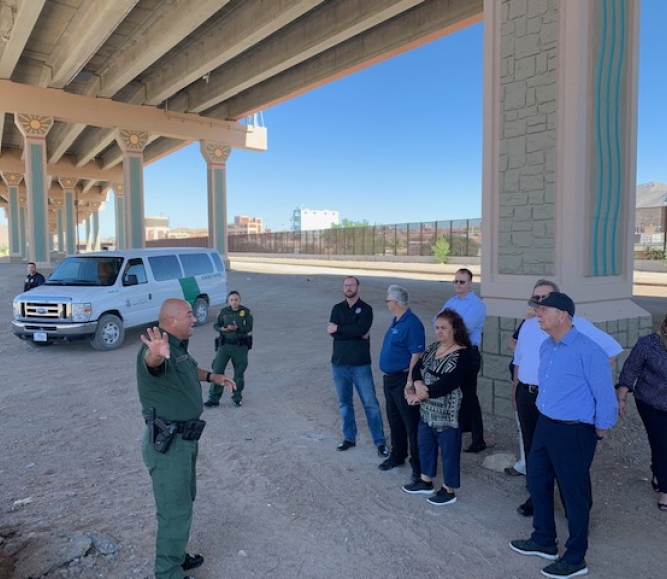County Leaders Visit U.S. Border to Examine Best Practices for Local Governments
Upcoming Events
Related News

National Association of Counties Immigration Reform Task Force and other county leaders tour El Paso County, Texas
WASHINGTON – Representatives from the National Association of Counties (NACo) Immigration Reform Task Force joined other county leaders, including county recipients of FEMA Shelter and Services Program funds, in a visit to border sites in El Paso County, Texas. Over two days, the group is set to tour facilities operated by the U.S. Department of Homeland Security (DHS), El Paso County and nonprofit organizations, highlighting the importance of collaboration and intergovernmental partnership in addressing the needs of migrants and asylum seekers.
The border trip is designed to provide participants with a better understanding of challenges facing the immigration system and how border counties are managing current migration patterns. The site tours convey how the county works with federal partners and the nonprofit sector to cohesively address matters pertaining to shelter, food, healthcare, transportation and other services.
The group will meet with U.S. Customs and Border Protection (CBP) and U.S. Border Patrol (USBP) officials at the Paso del Norte Port of Entry, the El Paso Sector Headquarters, the Santa Teresa Station and the El Paso Hardened Facility. They will also hear from representatives from the El Paso County Migrant Support Services Center, the Sacred Heart Church and a shelter for asylum seekers and migrants in Ciudad Juarez, Mexico.
“El Paso County is pleased to welcome county leaders from across the country for this important set of tours and discussion of best practices in managing immigration along the U.S. border,” said El Paso County Commissioner David Stout, chair of NACo’s Immigration Reform Task Force. “We will demonstrate how, together with our partners, El Paso County is meeting the mandate placed on counties to provide essential services for all residents, regardless of their immigration status.”
Counties play a central role in immigration from both operational and managerial standpoints. As administrators of federal benefits programs and frontline providers of public health and safety services for all residents, counties are directly impacted by federal immigration policies and practices.
The trip serves to inform federal advocacy efforts. NACo members will be able to share firsthand experiences and articulate real-world impacts of immigration policies when speaking to members of Congress, administration officials and other federal partners. Advocacy efforts will center around the NACo Immigration Reform Task Force’s consensus immigration principles.
“This is an important opportunity for county leaders to enhance their understanding of the complex landscape around immigration and examine practices on the ground,” said Stout. “The trip will help inform county leaders’ policy advocacy efforts and highlight how counties can utilize intergovernmental partnerships to address immigration challenges.”
NACo’s Immigration Reform Task Force provides a forum for county officials to discuss the impact of federal immigration policy on local governments and communities, and to engage with federal decision makers on matters related to immigration. For more information about the Immigration Reform Task Force and the consensus principles that guide its federal advocacy, click here.
County News
County officials tour border, see immigration practices firsthand

Related News

County Countdown – Dec. 15, 2025
Every other week, NACo's County Countdown reviews top federal policy advocacy items with an eye towards counties and the intergovernmental partnership.
Stretching small opioid settlement allocations helps funding do more
States and localities are set to receive $56 billion in opioid settlement dollars over an 18-year period, but not every county that receives settlement funding will get enough to build out infrastructure.